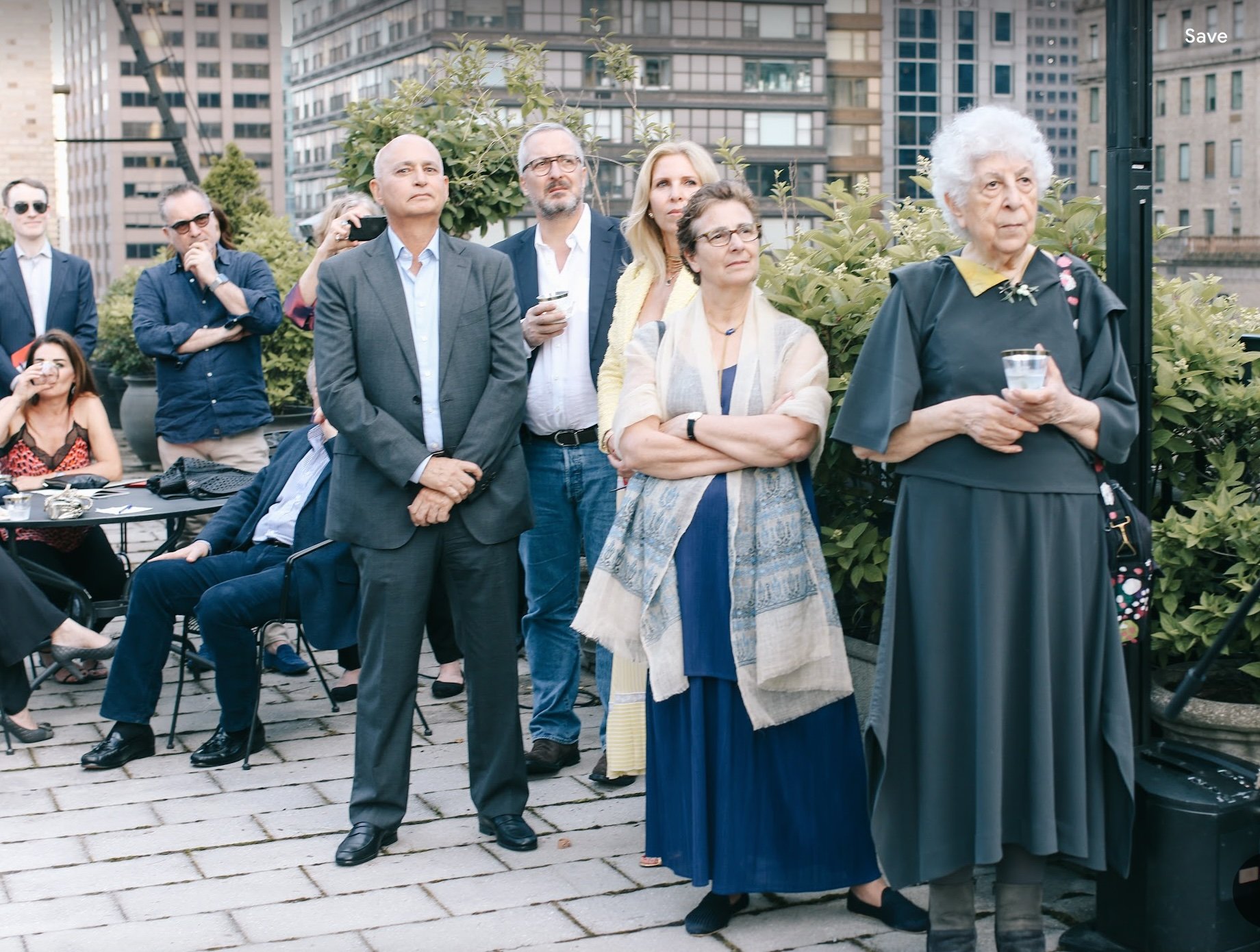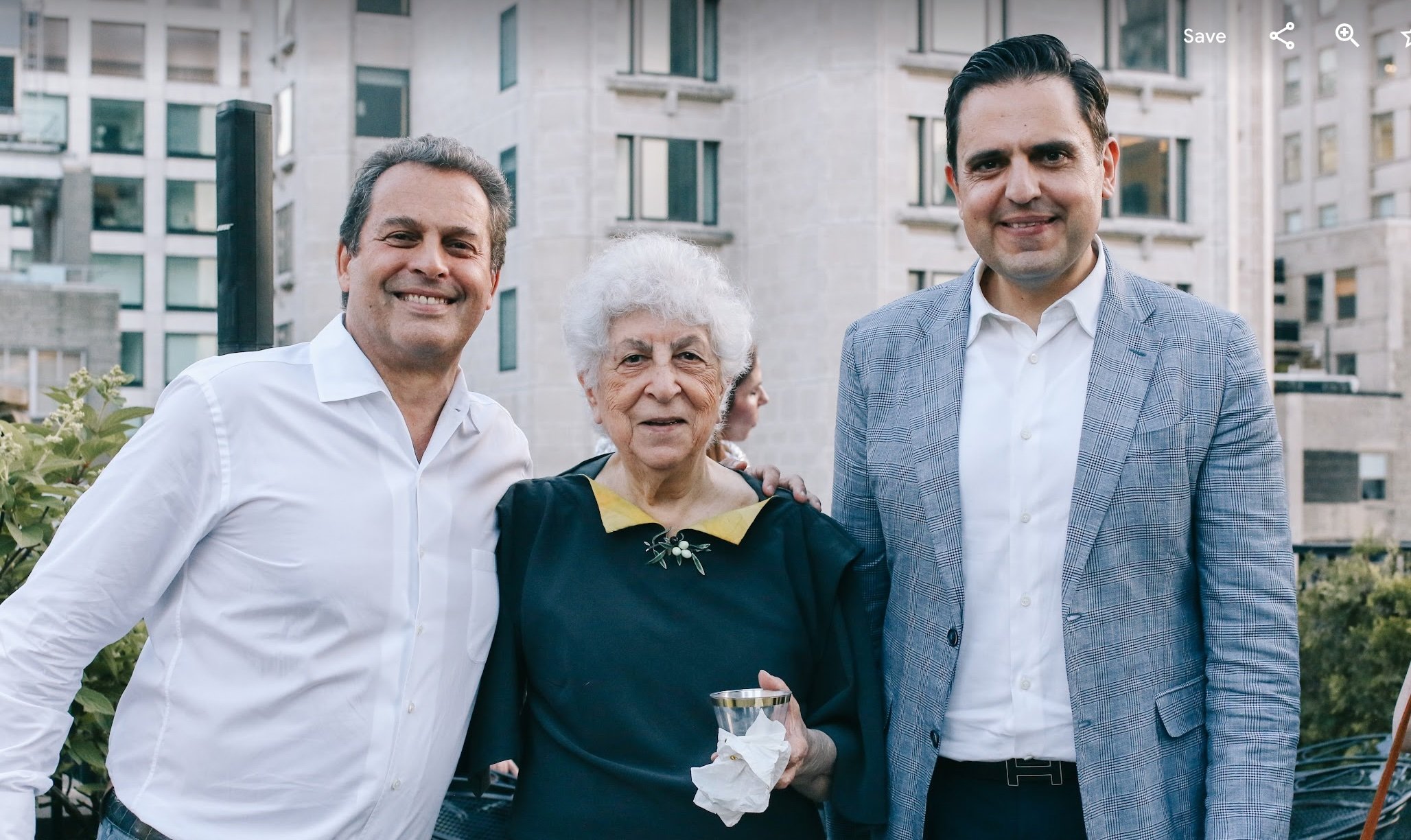
Carla Chammas and Kim Benzel consulting the auction catalog.
In October 2023, the Sursock Museum's fundraising campaign kicked off on Rue de Valois in Paris. French Minister of Culture Rima Abdul Malak was the host and patron of a gala dinner that brought together the Lebanese-Parisian elite around the Lebanese museum establishment, which was heavily damaged by the explosion of Aug. 4, 2020.
More recently, in June 2024, a cocktail party for the benefit of the museum was organized in New York at the home of Karim and Diala Tabet, two generous Lebanese-American patrons based in New York, who have become essential in supporting charitable, educational, artistic and cultural causes for the benefit of Lebanon. It is in the hanging garden of their sumptuous triplex, located on Park Avenue, that they organize events that attract a large number of the Lebanese diaspora. The latest event took the form of an awareness campaign as well as an auction of works by the greatest contemporary artists of Lebanese and Palestinian origin, which are found in major international collections, museums and institutions. "A Future in the Making" was the theme of this event, which took place in the presence of 80 guests for the benefit of the Sursock Museum. Present were, among others, the acting ambassador at the Lebanese consulate, Majdi Ramadan, Carla Shammas, Carla and Nicolas Shikhani, Oussama Rifahi, Kim Benzel of the Metropolitan Museum of Art, Ziad Antar, Philippe and Alex Massoud, Denise Maroney, Reem Acra, as well as a large number of young Lebanese collectors.
 Palestinian artist Samia Halaby (right), Kamal Tabet, Alex and Philippe Massoud (second and third row), at the auction in New York to benefit the Sursock Museum.
Palestinian artist Samia Halaby (right), Kamal Tabet, Alex and Philippe Massoud (second and third row), at the auction in New York to benefit the Sursock Museum.
This sale, which raised nearly $100,000, was made possible thanks to generous donations from artists such as Nabil Nahas, Samia Halaby, Ali Sherri, Suha Traboulsi, Walid Raad and Rayyane Tabet, as well as the Imane Fares gallery in Paris, and the Sfeir-Semler Gallery in Beirut. All the works presented are in New York with the exception of the prints by Ali Cherri which are in Paris. The sale took place through the Nada Boulos auction platform in Beirut.
Sursock Museum: The most important collection of modern Lebanese art
Supporting her appeal for the generosity of donors, Karina al-Helou, director of the Sursock museum, explained the strategy by presenting a film on the history of the museum and the current state of the premises following the various restoration works undertaken after the explosion at the port of Beirut on Aug. 4, 2020, which caused considerable damage. Over the years, the museum has shown the world its ability to survive, adapt and even improve with each reopening. The museum's collection includes 1,600 works of art and is the largest collection of modern art by Lebanese artists. Over the years, the museum has also presented international artists, including Rodin and Picasso.
This documentary tells the story of Nicolas Brahim Sursock, a philanthropist and art collector who donated his Venetian-style villa, built in 1912, along with his art collection to the Lebanese. The building took on another stature in 2015 with the intervention of two contemporary architects: Jean Michel Wilmotte and Jacques Abou Khaled.
“The history of this museum is closely linked to that of the city which survived the civil war and the explosion of Aug. 4, 2020. 70 percent of the building was damaged. We have undertaken restoration and rehabilitation work on the stained glass windows: 55 works have been restored,” said Helou. Tarek Mitri, president of the museum's executive committee, in turn emphasized that “Lebanon has gone through many tribulations, the last being the worst. Art and culture have helped us to hope and transcend reality. The museum's primary mission is to preserve, collect and support local artists. The annual Autumn show promoted their latest works, sparking artistic debates on Lebanese aesthetics and cultural identity.
 Samia Halaby surrounded by Karim Tabet and Majdi Ramadan.
Samia Halaby surrounded by Karim Tabet and Majdi Ramadan.
Contemporary art curator Marie-Nour Hechaime noted, “We know the social museum, but artists today need opportunities to produce an exhibition. The new programming aims to interact for free with a diverse and wider audience. It is a safe space for expression for the community. It also aims at the Learning Center for researchers, thinkers, artists and children. It is an inclusive space for meetings, education and cooperation.”
“We are now working to recover from the harsh financial crisis in Lebanon. We have created a comprehensive five-year implementation plan. All activities have been mapped by scope and budget on this large, colorful canvas. Whether it's education, exhibitions, public programs or operations. You can choose where your support goes. You will thus contribute to the rebirth of this museum, of your museum, of your baby, of our future generations,” concluded Helou.
Call for contributions
This call was followed by an invitation for contributions by the duo Karim and Kamal Tabet, two stalwarts of the Sursock Museum, who encouraged participants not only to invest in works of art but also to commit to the museum with a substantial donation over three years. Their call was generously heard.
Internationally renowned Lebanese-American artist Nabil Nahas, who divides his time between New York and Lebanon where he paints his emblematic "trees" of cedars, olive trees and palm trees, absent from the event, grabbed the spotlight of the auction. He is closely followed by Palestinian artist Samia A. Halaby, considered one of the most important living Palestinian artists. She also enjoys an international popularity rating exacerbated by the decision of Indiana University to cancel the first American retrospective of this activist, a decision that caused an outcry in the artistic and cultural world.
Halaby gave her impressions of the museum during her last visit to Lebanon. Tabet recalled her childhood memories and those of her parents who used to visit this institution in the middle of war, “a timeless place, to recharge your batteries and feel safe”.
Sales in the United States for charitable or cultural causes are tax deductible. "The museum, currently having a sponsor for tax deduction of donations through Myriad USA, is preparing to open a "501c Charity in the United States" platform soon.
This article originally appeared in French in L'Orient-Le Jour.
